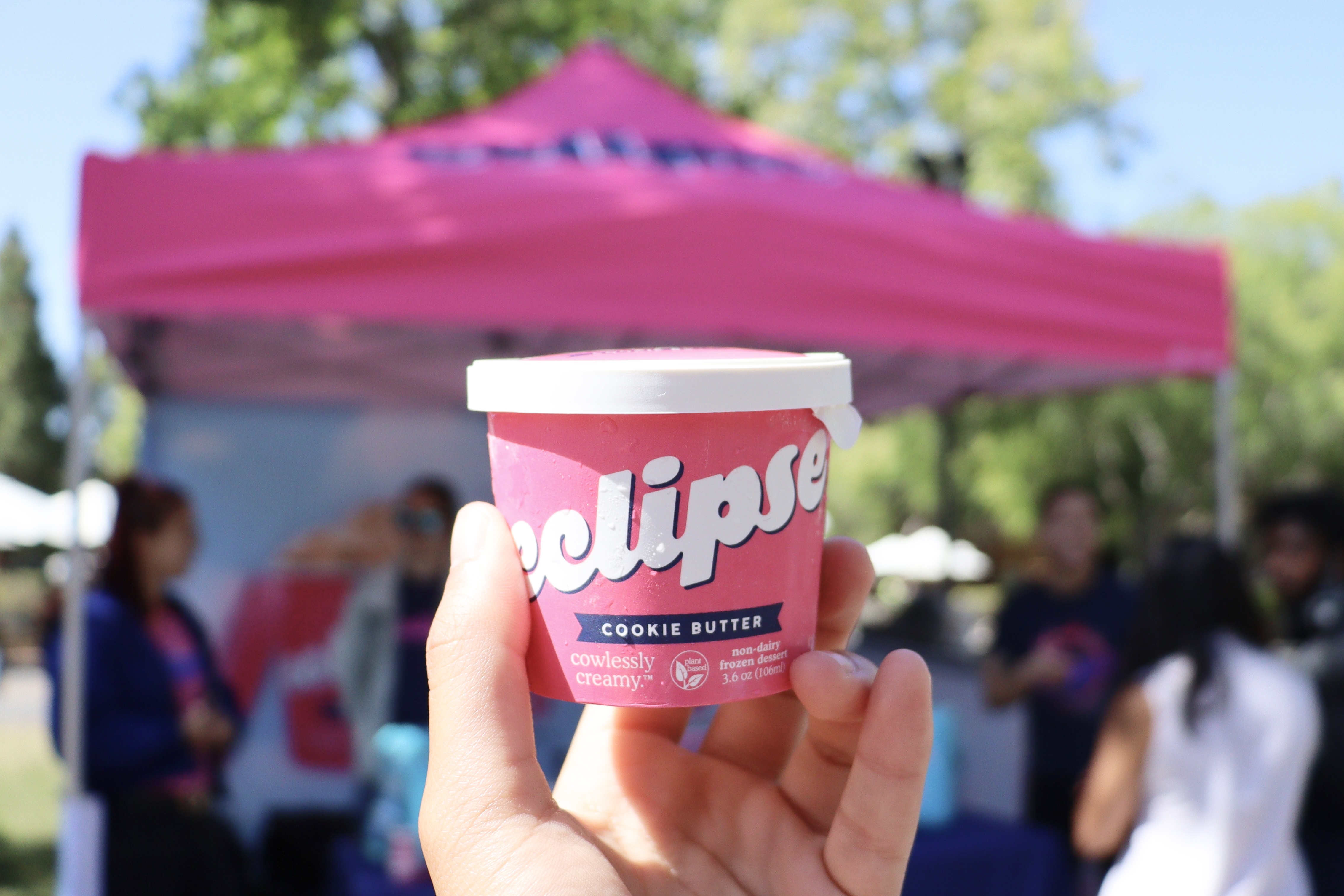When I was walking into the weekly farmers’ market at White Plaza on Tuesday, the usual stands were there — one for honey, one for dim sum, two for tacos, one for mochi donuts, a couple for fruit and various stalls that sell jewelry and plants. However, one stand — invited by the Stanford Alt. Protein Project — was a newcomer. Its highlighter pink and purple tent made its first and last appearance of the year as Eclipse, a Berkeley plant-based ice cream company, handed out free ice cream to students.
I, for one, am curious about the plant-based protein phenomenon that has taken the world by storm. I was introduced to the movement back in 2019, from an article I read in a class in high school. This was shortly before Burger King dropped the Impossible Whopper, a plant-protein alternative to a classic fast food option. I was skeptical — how could plants taste like meat? — until a cousin, a new vegetarian at the time, had tried the burger and exclaimed that it tasted identical to the real thing. I’ve been itching to try plant-based meals since, but I have not had the chance nor the money to actually try anything. So, when I heard Eclipse was joining the market lineup for the week, I actually woke up to my 10 a.m. alarm and made a beeline for White Plaza. A 3.6 oz pink cup of “Cookie Butter” ice cream was waiting to be handed to me.
Now, on to the important part: the ice cream taste. The short answer — it was really good! If you have the money and the drive to switch up your diet, I would recommend it as an amazing alternative to dairy ice cream.
The longer answer — the “Cookie Butter” flavor is an amazing ice cream, yet it is not without its flaws. For starters, I was shocked. It tasted like traditional ice cream, like real dairy milk was used. The texture was right, and it was creamy, velvety and rich. The vanilla ice cream paired very nicely with the cookie crumbs, which tasted like cinnamon graham crackers with the texture of cookie dough. However, there was a weird, artificial feeling that lingered in my mouth after I finished the dessert, like bad cake frosting but not as strong. You cannot taste it at all while actively eating the ice cream, though, and it washes away quickly with water.
It was a tasty treat in a pleasant package. The container’s vivid colors and vintage aesthetic felt nostalgic, like something you could get from a childhood ice cream truck, yet futuristic, with the color scheme and blocking. (Is their marketing making it feel comforting yet innovative?) I appreciated the mini plastic spoon that came at the bottom of the lid; it was easy to take off and, while compact, you could eat with it on the go.
Overall, I would recommend this ice cream to anyone who wants to try plant-based alternatives. It’s a great start, and I would consider becoming vegetarian if there were options like this that were accessible and readily available for low-income families and students, besides the occasional Beyond Burger. At Whole Foods, which is not a common grocery store in low-income neighborhoods, an Eclipse ice cream pint will cost you about $6. Online, you can purchase one pint for $11.99, which is about double the price of the average vegan ice cream. As one considers animal rights and the longstanding battle with climate change, it’s important to see how we can eat what we want in a more sustainable way that’s accessible for our individual socioeconomic statuses.
Editor’s Note: This article is a review and contains subjective opinions, thoughts and critiques.
